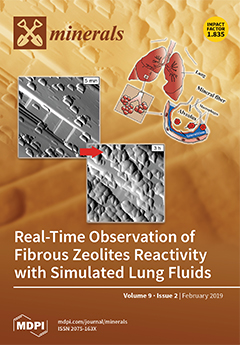Sediment core and porewater samples from the Western coastal tidal flat in Bohai Bay, China, were collected for meals and physical-chemical properties analysis. The vertical distribution characteristics of eight metals along the core was investigated based on
137Cs and
210Pb radionuclide dating. The chemical fractions of six metals (Cu, Pb, Zn, Ni, Mn and Cd) were also measured based on the modified European Community Bureau of Reference (BCR) sequential extraction procedures to better understand the mobility and bioavailability of these metals in the sediment. In addition, geoaccumulation index (
Igeo) and risk assessment code (RAC) are used to assess risk status of these metals in the environment.
210Pb measurement indicates a sedimentation rate of about −1.87 cm∙year
−1. The metals Cu, Zn, Pb and Ni show similar vertical distributions throughout the core, while Mn and Cd show different distribution patterns. Ni, Cu, Pb and Zn are strongly associated with the residual fraction while Mn and Cd are dominant in the acid-soluble fraction. According to the estimated diffusive fluxes, the Zn ions were the most mobilized, followed by Cu, Ni, Pb, and to a lesser extent Cd. The result of
Igeo shows that Ni in sediments does not reflect any pollution, and Cu, Pb and Zn are in a level from unpolluted to modest polluted throughout the core. Mn and Cd have obvious anthropogenic sources. Based on the RAC, Cd and Mn pose a high to very high risk to the local environment, respectively, due to the significant percentage of exchangeable fraction. Clay content is significantly positively correlated with Ni, Cu, Al and Fe, and Cu, Pb, Zn and Ni might originate from the same sources or be influenced by similar geochemical processes. River runoff and atmospheric deposition are important sources for heavy metals, and since 1998, domestic sewage discharge might have had an important influence on the source of heavy metals (except for Cd and Mn).
Full article





